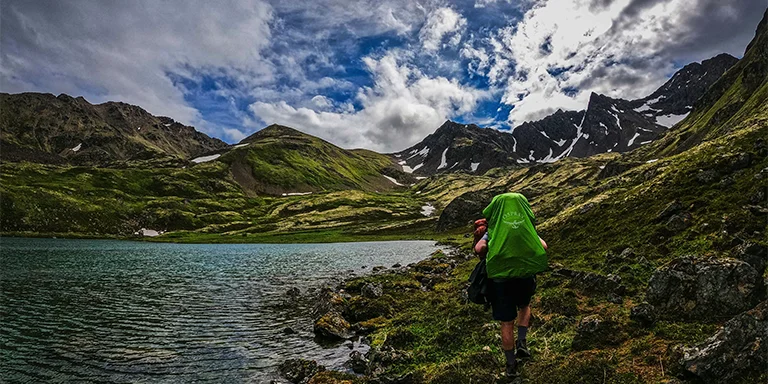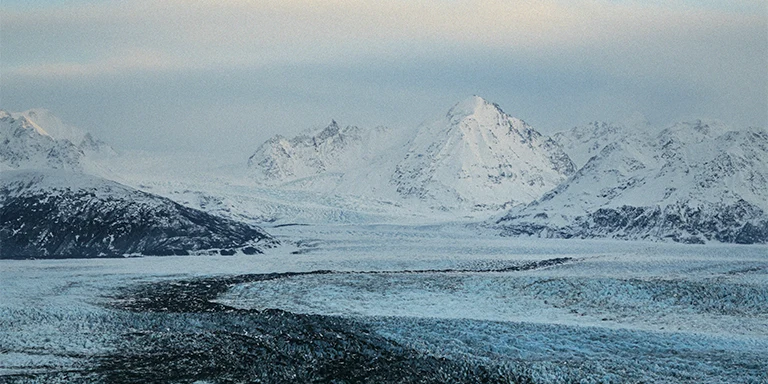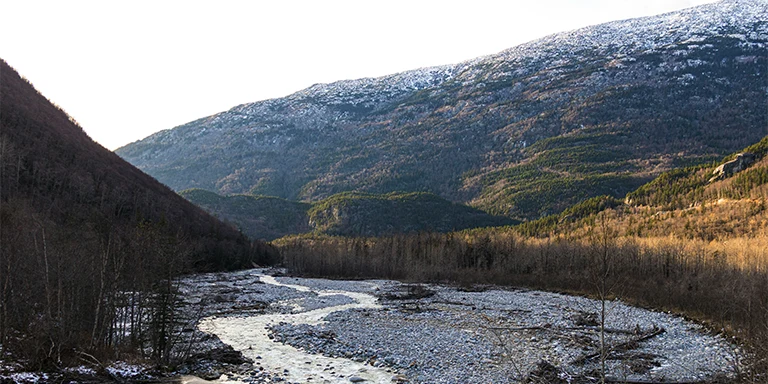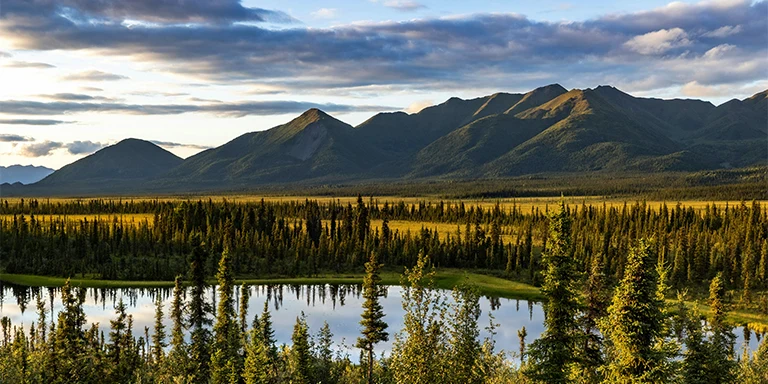

Backpacking in Alaska offers an unparalleled wilderness experience for outdoor enthusiasts, from the towering peaks of the Alaska Range to the glacial landscapes of Denali National Park, including remote destinations like the Arctic National Wildlife Refuge.
And that’s what this post is all about – backpacking in Alaska. We’ll provide tips to help you prepare for backpacking in this vast and rugged state, as well as showcase the TOP 5 multi-day trails.
Intrigued? Let’s begin the adventure.
Discover the most stunning long trails in Alaska for amazing wilderness adventures:

Length: 37.4 mi / 60.2 km
Type: Point to point
Difficulty: Hard
Elevation Gain: 4901 ft / 1494 m
Location: Chugach National Forest
Estimated Hiking Calorie Burn: 10 000 calories
More Details: See on AllTrails
Hike this spectacular 37-mile point-to-point from Hope to Cooper Landing, Alaska. A challenging multi-day trek through rugged backcountry along Resurrection Creek. Pass secluded cabins and pristine alpine lakes surrounded by peaks. Remote but rewarding for experienced backpackers seeking solitude.

Length: 30.1 mi / 48.4 km
Type: Point to point
Difficulty: Hard
Elevation Gain: 6003 ft / 1830 m
Location: Denali State Park
Estimated Hiking Calorie Burn: 8200 calories
More Details: See on AllTrails
Trek the scenic 30-mile Kesugi Ridge in Denali State Park, considered one of America’s most beautiful trails. Experience epic mountain vistas and solitude on this challenging Alaska backpacking adventure. A rewarding wilderness hike offering breathtaking views June-September. Permits required.

Length: 40.2 mi / 64.7 km
Type: Out and back
Difficulty: Moderate
Elevation Gain: 2746 ft / 837 m
Location: Knik River Public Use Area
Estimated Hiking Calorie Burn: 10 000 calories
More Details: See on AllTrails
Hike 40 miles through remote valleys to the mighty Knik Glacier in Alaska. A moderately challenging multi-day trek offering solitude and stunning scenery. Spot moose and get close to massive glaciers on this rewarding wilderness adventure from May to August.

Length: 31.2 mi / 50.2 km
Type: Point to point
Difficulty: Hard
Elevation Gain: 6128 ft / 1868 m
Location: Klondike Gold Rush National Historical Park
Estimated Hiking Calorie Burn: 8250 calories
More Details: See on AllTrails
Backpack the stunning 31-mile Chilkoot Trail through remote Alaskan wilderness. A challenging multi-day hike offering epic mountain scenery and solitude June-September. Prepare for rugged, muddy terrain but be rewarded with majestic views of pristine backcountry. An unforgettable adventure for hardy backpackers.

Length: 39.9 mi / 64.2 km
Type: Out and back
Difficulty: Hard
Elevation Gain: 8733 ft / 2662 m
Location: Wrangell – St Elias National Park and Preserve
Estimated Hiking Calorie Burn: 13 300 calories
More Details: See on AllTrails
Proceed with caution on the remote 40-mile out-and-back Chitistone Trail in Alaska. A highly challenging route through rugged wilderness terrain. Epic scenery but potentially dangerous river crossings. Only for experienced backpackers seeking solitude April-October. Allow ample time to fully experience this unforgettable yet demanding trek.
Alaska has diverse weather throughout the year. It usually has cold winters and milder summers due to its subarctic or polar climate. Yet, the weather can be unpredictable:
Before making your gear selection, take a look at the weather statistics for Alaska (Anchorage):
| Jan | Feb | Mar | Apr | May | Jun | Jul | Aug | Sep | Oct | Nov | Dec | |
|---|---|---|---|---|---|---|---|---|---|---|---|---|
| High °F | 24 | 28 | 36 | 47 | 58 | 65 | 67 | 65 | 56 | 42 | 29 | 24 |
| Low °F | 13 | 16 | 21 | 32 | 43 | 51 | 55 | 52 | 44 | 31 | 19 | 14 |
| Rain/Snow (D*) | 7 | 5 | 4 | 4 | 5 | 7 | 9 | 11 | 11 | 10 | 7 | 8 |
Not sure if Alaska is right for you?
Don’t forget to check out our backpacking guide for Alberta.
You can have campfires while backpacking in Alaska, but there are some restrictions you need to follow. In general, campfires are only allowed below tree line and away from flammable vegetation. You must clear an area around the fire site and have water and tools available to fully extinguish the fire. Campfires are not permitted on Alaska state park lands when the fire danger is high to extreme. On federal lands, campfires may be restricted based on location and fire danger.
The best way to deal with wildlife is to avoid surprising them. Make noise as you hike to alert animals of your presence. Be extremely cautious around bear cubs or moose calves as mothers are protective. Give animals a wide berth and detour around them if possible. Avoid camping and cooking near animal trails. Store food properly by hanging or using bear-resistant containers. Carry bear spray and know how to use it safely. If charged, stand your ground, speak calmly, and deploy bear spray. Report aggressive animals to land managers.
Head into Alaska’s remote wilderness for an exciting backpacking adventure immersed in nature, but take precautions in this rugged landscape. Acquire detailed maps and make others aware of your route before following isolated trails. Pack layers, first-aid supplies, a compass, flashlight, whistle, bear spray and plenty of food in case you become stranded. Watch for loose rock, melting snowfields, and slippery stream crossings. Make noise to avoid surprising bears, moose and other wildlife. With adequate provisions and preventative measures, you can revel in Alaska’s stunning natural beauty while backpacking. Focus on preparation, caution and responsibility so your desire for adventure can be fulfilled smartly when immersed in Alaska’s vast wilderness. Stay alert, be ready for the unexpected, and prioritize safety to maximize your backpacking experience in The Last Frontier.